Mozambique: Yassin Monteiro Nunes marries Princess Sibahle of Eswatini
South Africa: SANDF gives an update on Mozambique deployment
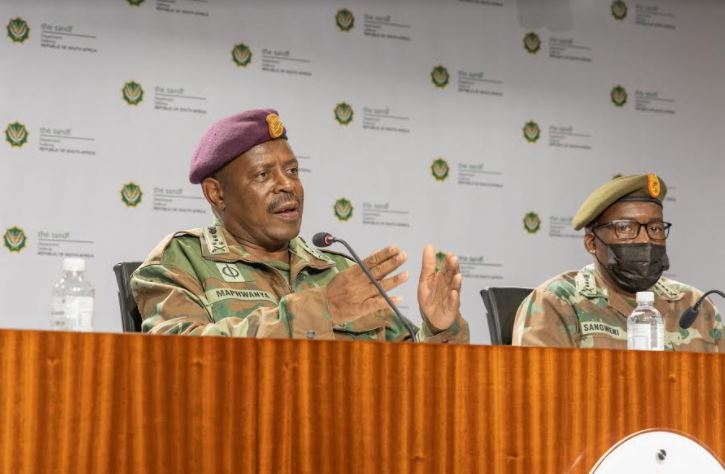
CSANDF General Rudzani Maphwanya.
Chief of the South African National Defence Force, General Rudzani Maphwanya, yesterday briefed the media on the status of the country’s deployment in Mozambique’s Cabo Delgado province.
The Extraordinary Summit of the Southern African Development Community (SADC) in Maputo, Mozambique on 23 June 2021, led the SANDF to launch Operation Vikela. It forms part of South Africa’s contribution to the Southern African Development Community (SADC) Mission in Mozambique (SAMIM).
“This summit gave birth to the mandate for SADC Standby Force to be deployed in support of Mozambique to combat terrorism and acts of violent extremism mostly carried out by Al Sunnah wa Jama’ah (ASWJ) and their affiliates in the Cabo Delgado region,” he explained.
The eight SADC Troop Contributing Countries comprising SAMIM are South Africa, Angola, Botswana, Democratic Republic of Congo, Lesotho, Malawi, Tanzania and Zambia, working in collaboration with the Forças Armadas de Defesa de Moçambique (FADM) of the host country. Rwandan troops are also in the area of operation under the invitation of the host country.
Since the start of this deployment, SAMIM forces concluded two major operations from October 2021 to January 2022, which led to the capture and destruction of several ASWJ terrorist bases in the area east of Chai settlement and the Messalo River in Macomia district in Cabo Delgado Province.
Besides 31 terrorists being killed, 16 women, eight children and two elderly males believed to have been abducted by the terrorists were rescued. These victims are under the care of national authorities. During Operation Buffalo, the SAMIM forces met strong resistance, but succeeded in dominating the terrorists who continue to suffer massive losses in the operational area.
SAMIM forces have also confiscated weapons that include RPG-7 launchers, PKM machine guns and a large quantity of AK-47 assault rifles and grenades. Other equipment confiscated include vehicles, motorbikes, cellphones and technology devices. These devices have provided invaluable information that is being analysed by the technology fusion centre.
“Since its deployment, SAMIM has registered a number of milestones, including recapturing villages, dislodging terrorists from their bases and seizing weapons and warfare material, which have contributed in creating a relatively secure environment for safer passage of humanitarian support,” Maphwanya stated. “Additionally, members of the community have developed confidence in SAMIM forces, feeling more secure and allowing internally displaced persons to return to their normal lives.”
He specifically noted that South Africa’s International Relations Minister Naledi Pandor told the Troika meeting on 3 April that the SADC mission had made good progress in repelling attacks over the past year.
Questioned on the de-escalation of SAMIM from AU Scenario 6 to Scenario 5, Chief Joint Operations, Lieutenant General Simphiwe Sangweni, clarified the term de-escalation, saying it is more appropriate to speak of transition. “Six was meant as interventionist by small elements for a very limited time in order to degrade the terrorist threat,” he explained. “Transitioning to Five gives effect to peace support, and actually requires a larger effort and more feet on the ground.”
He insisted that Scenario Five as peace support modality still allows for ‘attack and destroy’, but it implies a comprehensive approach to establish stability. This entails strengthening governing structures, social and economic activity, such as rebuilding infrastructure, re-establishing education and creating normality of life in the northern part of Mozambique.
On the main issue of the day, namely dealing with the devastating floods in KwaZulu-Natal, he stated that while the SANDF was called upon to deploy air assets, it is a PROVJOINT responsibility. “The lead entity is the Department of Cooperative Governance and Traditional Affairs (COGTA).”
Maphwanya added that the SANDF and even the police (SAPS) have been affected by the flood with hangars becoming inundated. This situation required inspection of aircraft to ensure their avionics have not been affected before these air assets were deployed. “We are even deploying air assets from elsewhere in the country to deal with this disaster,” he said.
He conceded that multiple deployments, notably in the Democratic Republic of Congo (DRC), Cabo Delgado and now the floods, pose challenges to the SANDF. Whilst the SANDF is geared to operate simultaneously in different areas, budgetary constraints make it difficult.
He said the Commander-in-Chief, President Cyril Ramaphosa touched on this very issue in his State of the Nation address (SONA) that the SANDF must be capacitated. “Whatever ambition our country may have for its military forces, that ambition has to be matched by resources,” Maphwanya said. “The question South Africa has to answer is: What type of defence force do you want?”
Sangweni said the President and Parliament have approved deployment of 1 495 soldiers to Cabo Delgado. Operation Vikela’s land element consists of infantry and special forces. There is a maritime capability involving Tanzania along with South Africa’s SAS Spioenkop that is deployed now. It should be recalled that Al Sunnah wa Jama’ah terrorists also infiltrate from the sea.
Furthermore, SAMIM consists of medical support elements; a field hospital is in place for South African soldiers, and in some areas an engineer component, as well as counter-IED capabilities and military police.
As for air assets, he said SAMIM has four aircraft deployed from the contributing nations. At the same time, Maphwanya would not be drawn on any details, including deployments of armoured vehicles and gunships such as the Rooivalk attack helicopter to Cabo Delgado.
“This touches on operational capabilities that cannot be divulged,” he stated. “The fact that an armoured personnel carrier (APC) of a contributing nation was hit provides an answer of sorts on armoured vehicles there, but we cannot say more at this stage. We are not denying or confirming that we are considering deploying the Rooivalk or any other attack helicopters that SADC as a region has.”
SADC as a region is funding the SAMIM deployment; part of it is covered by its peace fund. The SADC Secretariat has worked out the modalities for each participating nation to bring resources into play, and some form of disbursement is currently being looked at. “We can be proud of the fact that we as SADC are carrying out this mission without help from any other body.”
Maphwanya earlier made the point that South Africa, as all other nations in the region, is keenly aware of the importance of stabilising northern Mozambique.
“We shall restore stability in that part of Mozambique, bearing in mind the proximity of the area of Cabo Delgado to our domestic borders,” he said. “Failure to collectively address the security situation can easily result in our country having to deal with grave security challenges spilling over from there.”
The military intervention is but a part of the solution; political, diplomatic, economic and social interventions are critical for peace and security for all.



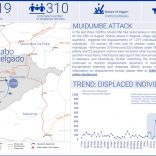
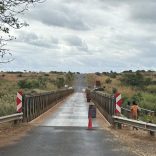
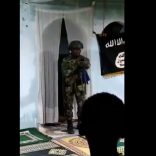
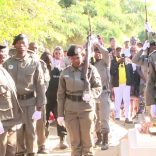

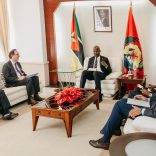
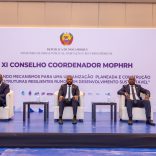
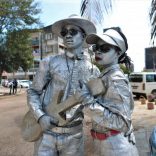


Leave a Reply
Be the First to Comment!
You must be logged in to post a comment.
You must be logged in to post a comment.